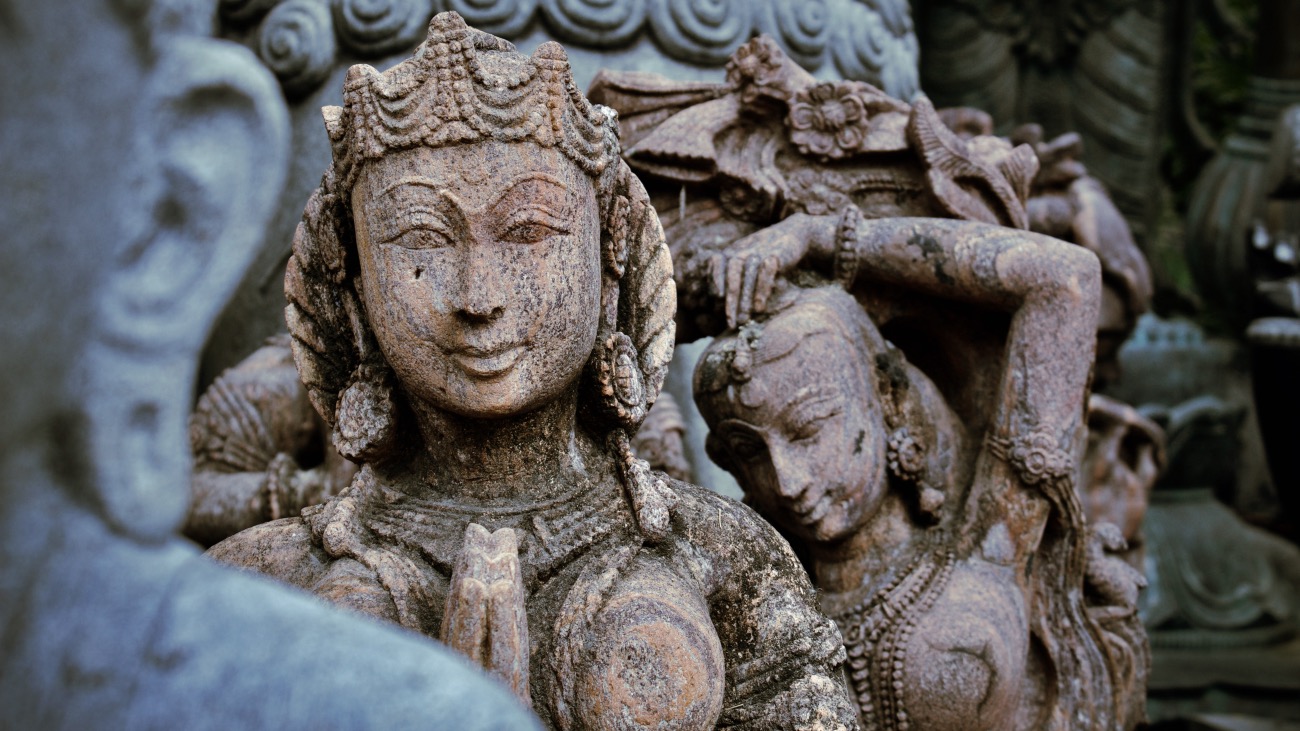Yoga Alliance Professionals

Tantra and Goddess Worship can be seen like two entwining fish. If these secretive practices have existed since the earliest humans, they also have been driven underground by the dominant culture and the patriarchy. While there are a few references to tantra in the Vedas, mostly it was practiced by the tribal, indigenous and non-Vedic cultures. It’s important to remember that early yogic texts were written by Brahmins—priests who were high-caste, conservative men often associated with maintaining order in society. In the past ten years, there has been a shift in the interpretation of ancient texts. Instead of linguists who are mostly interested in Sanskrit texts, foreign scholars, female Indian scholars, and spiritual practitioners have been studying the deeper meaning of the tantric texts.
Tantra became popular during the 5th to 6th centuries C.E. due to an overemphasis on ‘elite thinking’ in Brahmanical India and ordinary people getting tired of being told what to do. Villagers and farmers didn’t really care if “everything is an illusion”. That didn’t help them if a sheep died giving birth or the harvest was eaten by locusts. One of the most dangerous things was the body. It was viewed as impure and even early hatha yogis practiced tapasya (austerities) to conquer the desires of their own bodies. Some still do. With tantra, instead of the body being viewed as something to get rid of, it was embraced, and in fact became a vehicle for liberation. But the extreme and unorthodox nature of tantric practice meant that the sadhaka(s) tended to be farmers, indigenous and low-caste people, people who were more concerned about their crops than Sanskrit liturgy.
At the heart of tantra, fierce yoginis merge with Shaivite siddhas—the Pashupatas—who are fond of skulls and live in cremation grounds. The last thing orthodox Brahmins would want to accept were naked, intoxicated, wild, undomesticated women who indulged in taboo and transgressional practices. It’s not surprising that these practices didn’t make it into the main Brahmanical texts.
The tantric movement gained momentum and by 1200 C.E., it became the most popular religion in India and everyone practiced it from peasants to royalty. Kings throughout Asia took tantric initiation. Alexis Sanderson writes in The Shaiva Age (2009):
"The early medieval period, from
about 500 C.E. to 1300 C.E., saw
a decline in the role of sacrifice…
Kings continued to accept their role
as the guardians of the Brahmanical
order [but] their personal religious
commitment generally took the
form of Buddhism, Jainism, or,
more commonly, devotion to Shiva,
Vishnu, the Sun-God or the Goddess."
While all forms of the goddess still exist in India, over time, she has undergone a transformation from the wild, dark-skinned village goddess to a fair-skinned coy seductress, a demure, domesticated householder goddess. Her wild flying hair has been combed and her uncontrollable and uncontainable energy tamed. In the 10th century C.E. there was a shift away from the frightening kapalika, skull-bearing images, to the more erotic or mystical emanations of yoginis in the temples. Early indigenous or folk practices were incorporated into more orthodox religions. The original fearful deity has merged with a gentler and more modest Narayani. But all manifestations of the goddess are Durga. Regardless of the iconography, Shakti is the powerful, dynamic force that pervades all existence.
Shiva is the Absolute—formlessness itself. He is invisible and it’s his dance with the Shakti that brings his energy and presence into form. The masculine is the container, the field, the one who holds space upon which the feminine Shakti is dancing. Like the Devi, tantra is the warp of a loom weaving diverse threads and seeing the essence, the unity behind it all.
These Stories on Traditional
10 Beaverhall Road,
Edinburgh,
Scotland,
EH7 4JE
Copyright © 2025 Yoga Alliance Professionals Ltd. All Rights Reserved. Terms of Use | Privacy Policy
YOGA PROS ORGANISATION LIMITED, trading as YOGA ALLIANCE PROFESSIONALS, is a Not for Profit Scottish Company number SC502923
No Comments Yet
Let us know what you think